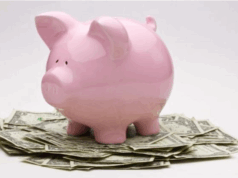The European Union’s central bank lowered interest rates for the first time since 2019 on Thursday, which, though heavily anticipated by economists and investors alike, represents a major milestone in the global economy’s monetary policy pivot—and draws more attention to the Fed.
The European Central Bank cut its main lending rate from a record high of 4% to 3.75%.
That still poses far higher borrowing costs than the negative rates the group deployed from 2014 to 2022, as the ECB abandoned its stimulatory monetary policy to stifle surging inflation in the wake of Russia’s invasion of Ukraine, which sent European energy prices soaring.
The move comes a day after Canada’s national bank became the first Group of Seven body to lower rates as inflation subsides from its high point across Europe and North America.
The Stoxx 600, Europe’s benchmark stock index akin to the S&P 500, touched a new all-time high Thursday following the announcement.
Get Forbes Breaking News Text Alerts: We’re launching text message alerts so you’ll always know the biggest stories shaping the day’s headlines. Text “Alerts” to (201) 335-0739 or sign up here.
Though central banks do not move in lockstep, the growth-friendly shift from decision makers abroad puts increased focus on when the U.S.’ Federal Reserve will follow suit. It is extremely unlikely that the Fed will cut rates at its next policy-setting meeting next week, with the market pricing in a 0% chance of lower rates this month, according to CME FedWatch Tool. But investors have grown more confident in the chances of lower interest rates in 2024, pricing in 50 basis points of cuts as the most likely outcome by year’s end.
Bond yields, which most directly impact the borrowing costs facing consumers and companies, have sank considerably in recent weeks as the global central bank pivot grew clearer. The yields on 10-year U.S. Treasury notes are about 4.3%, their lowest level in two months, dipping 30 basis points since the beginning of May. Lower interest rates tend to stimulate the economy as lower borrowing costs make the debt financing that make the economy go round cheaper, while higher rates typically bring weaker growth and are instead enacted to curb inflation and keep the value of currencies afloat.
“Current returns on cash will not be available for much longer…once these central banks begin easing policy,” according to Solita Marcelli, UBS Global Wealth Management’s chief investment officer, Americas. With cheaper borrowing costs, investors will also no longer be able to enjoy the slam-dunk high returns offered by money-market funds and government bonds over the last two years, as those are closely linked to federal lending rates.








